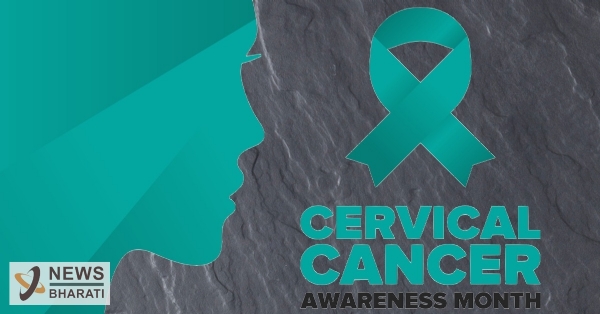Why we need awareness about cervical cancer
Cervical cancer is a taboo subject in Indian society. Hence, very few are aware of it. This article shows percentage of women who have undergone a screening test for cervical cancer.
Total Views |
In the previous article, we read about cancer in India. In that article, we read about, the situation of oral cancer in India. Along with oral cancer, cervical cancer is also a serious issue for women in India. Ignorance towards cancer and the taboo of speaking about cervical cancer worsen the situation.

As stated on the National Health Portal (NHP), “When cancer develops in the cervix of female it is termed as cervical cancer or cancer cervix. The cervix is the lower part of the uterus and connects the body of the uterus to the vagina (birth canal). The lower part of the cervix (ectocervix) lies within the vagina and the upper two-thirds of the cervix (endocervix) lies above the vagina. Most cervical cancers originate in the area where the endocervix and ectocervix join.” The same website also describes the causes of cervical cancer. The highest risk is posed by human papillomavirus (HPV). HPV is mainly transmitted through sexual contact and most people are infected with HPV shortly after the onset of sexual activity. Skin-to-skin genital contact can transmit the infection. HPV infections usually clear up without any intervention within a few months after acquiring the infection, and about 90% clear within 2 years. A small proportion of infections with certain types of HPV can persist and progress to cancer. The time period between the oncogenic (cancer-causing) infection and the occurrence of invasive cervical cancer is 15–20 years. Along with the virus, there are several other factors such as early first sexual intercourse, multiple sexual partners, high parity, long-term use of hormonal contraceptives, tobacco use etc.
Also Read: Requirement of Awareness About Oral Cavity Cancer
In NFHS, the percentage of women ever undergone a screening test for cervical cancer is also measured. In NFHS 5 state-wise distribution of this percentage can be seen. It is present state-wise and district-wise. Most of the states fit in the lower percentage class. As said above, the taboo around this topic acts as a hurdle; hence, the awareness to go for a screening test also remains low. Another possible reason for a lower percentage of women ever undergone a screening test for cervical cancer could be, because of the taboo of the topic, women might not have been able to share the truth.
Also Read: COP27- Way Forward for India
_202212101535122608_H@@IGHT_0_W@@IDTH_600.jpg)
The map shows that most southern states have a higher percentage of women who have ever undergone a screening test for cervical cancer. Especially, Tamil Nadu has the highest percentage. The same case also reflects in the district-wise map as well. Let’s have a look at it.
Also Read: Households with electricity
_202212101533591603_H@@IGHT_0_W@@IDTH_600.jpg)
As stated earlier, we can see the districts with a high percentage are located in Tamil Nadu. Some districts with above-average performance are also located in central India, but very few districts with high percentages are found.
According to some unconfirmed media reports and some doctors’ opinions, the chemicals in the sanitary pad cause various problems, including cervical cancer. Recently the news of a vaccine for cervical cancer was also in discussion, but there is no official confirmation available on it yet. ‘Awareness’ can become a mantra to save the lives of many women dying because of cervical cancer.



